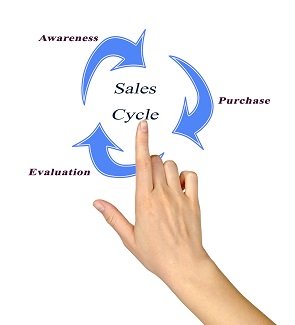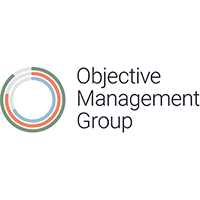 Sales take time to close. Whether you’re launching a new business or growing an established one, the ideal time for a closed sale is usually “yesterday.” But we all know that’s not how life works. There is a tremendous benefit, however, in being able to predict how long it actually takes you to close a sale from the moment you interact with a new prospect. Your sales cycle, quite simply, is the length of time from your first interaction with a client to the point at which you have money in hand.
Sales take time to close. Whether you’re launching a new business or growing an established one, the ideal time for a closed sale is usually “yesterday.” But we all know that’s not how life works. There is a tremendous benefit, however, in being able to predict how long it actually takes you to close a sale from the moment you interact with a new prospect. Your sales cycle, quite simply, is the length of time from your first interaction with a client to the point at which you have money in hand.
For a retail store, this could be a matter of minutes: a new customer enters the store, finds an item, and purchases it. For a business-to-business (B2B) transaction, the process could take several months or even longer. Understanding your sales cycle is absolutely essential to realistic planning and priority setting for your business. Unfortunately, most business owners and sales managers engage in wishful thinking when it comes time to define exactly how long it will take for their leads to close. They plan for what they want their sales cycle to be rather than for what it actually is. Just like you can’t budget based on your best month of revenue if all the other months typically fall much shorter, you can’t define your sales cycle based on the quickest sale you ever made. Besides the nature of your industry itself, three major factors affect the length of your sales cycle:
- Size of the Sale – Generally speaking, the larger the sale, the longer the sales cycle.
- Complexity of the Sale – When you are selling a company something they’ve never bought before, it is going to take longer to close the sale than if you were simply convincing them to buy from you to replace an existing product or service.
- Approval Process – A single decision maker will lead to a shorter sales cycle than if you have to submit to a committee.
It is also important to be able to evaluate which stage of the decision-making process your prospective clients are in. Have they already decided they need what you are offering, or are you still trying to educate them about how you can help?
So how do you calculate your real sales cycle? The simplest way to determine your actual sales cycle is to look at your sales over a specific period of time. The length of that time period will vary from industry to industry. For some companies, it may make sense to look at sales over the course of six months; others may need to examine them over two years. Then take out the fastest 10 percent and the slowest 10 percent. The average time it took for the middle 80 percent of your sales to close is the best number to use when predicting your sales cycle. It may not be a number you like, but it’s reality, which is where we all need to start.
Caryn Kopp is the Chief Door Opener® at Kopp Consulting, whose Door Opener® Service helps clients get in the door for initial meetings with high-level, hard-to-reach prospect decision makers. Kopp Consulting, has been recognized on the Inc. 5000 list and has received the Sales Outsourcing Provider of the Year award. Caryn’s book, “Biz Dev Done Right,” co-authored with Carl Gould, is an Amazon best seller. She is also the author of “The Path to The Cash!® The Words You NEED to Bypass Those Darned Prospect Objections and is a faculty member of Gazelles Growth Institute. Reach her at www.koppconsultingusa.com.






